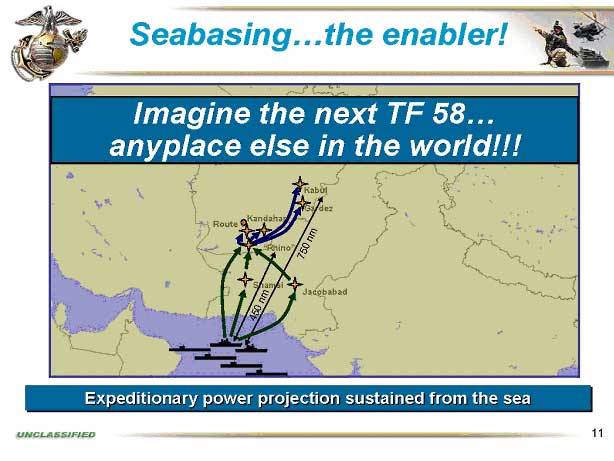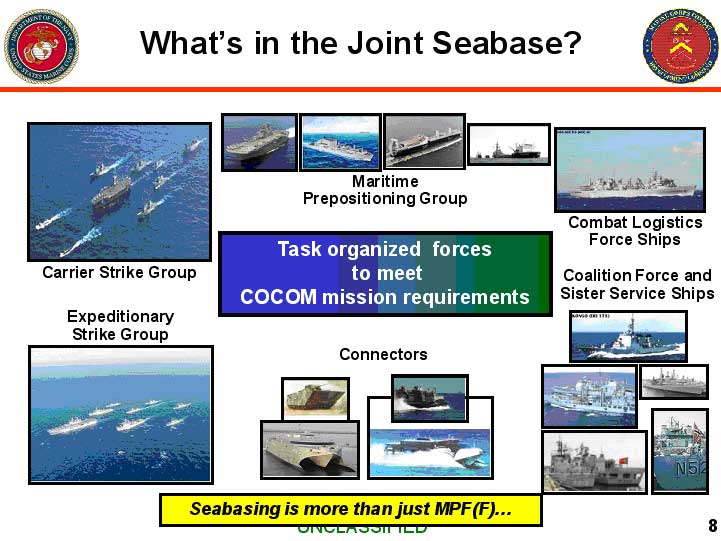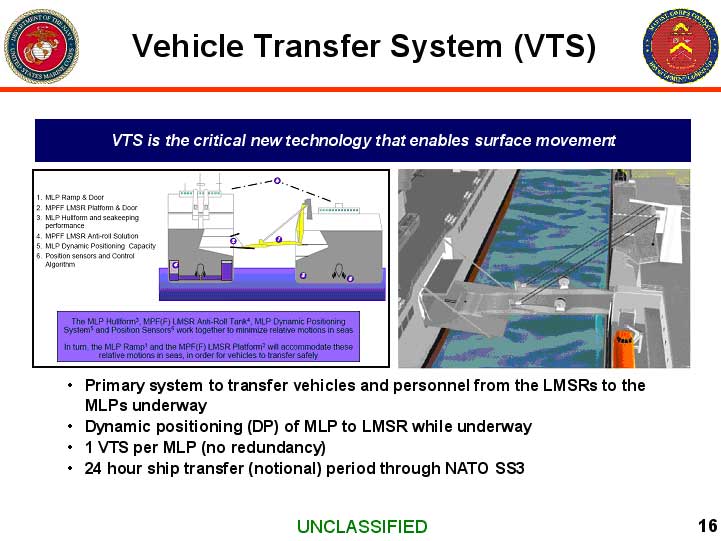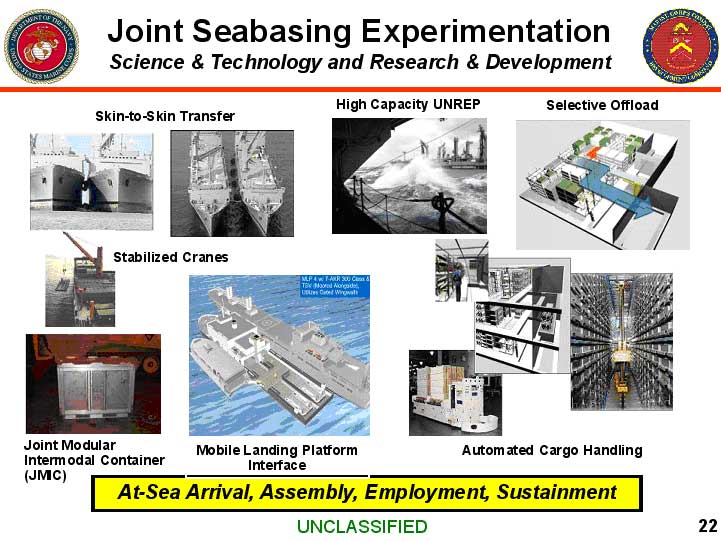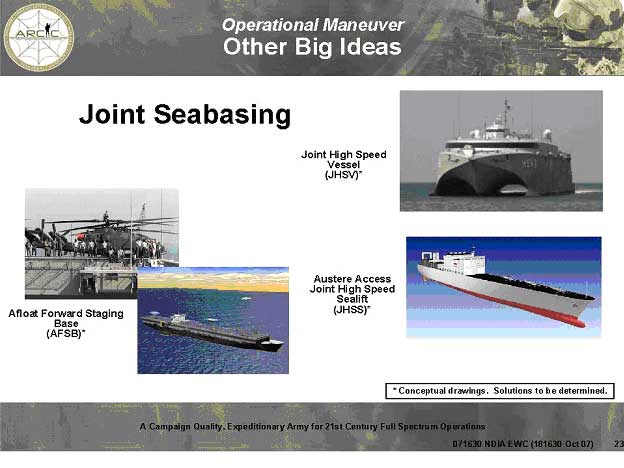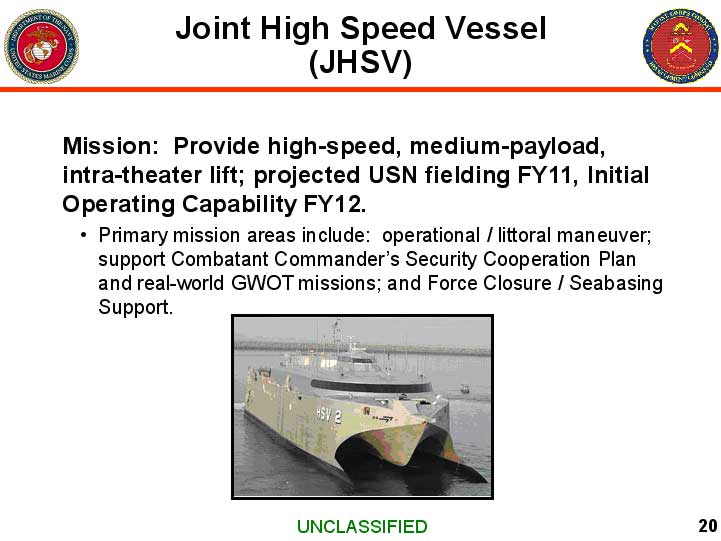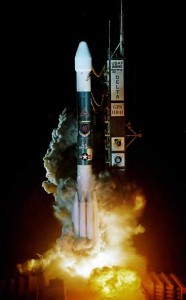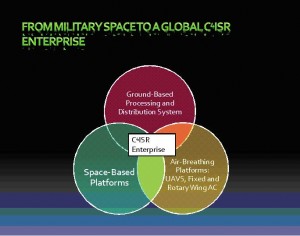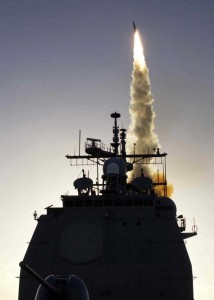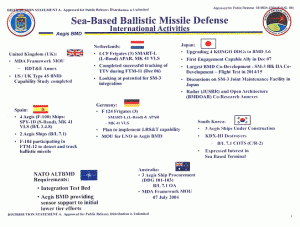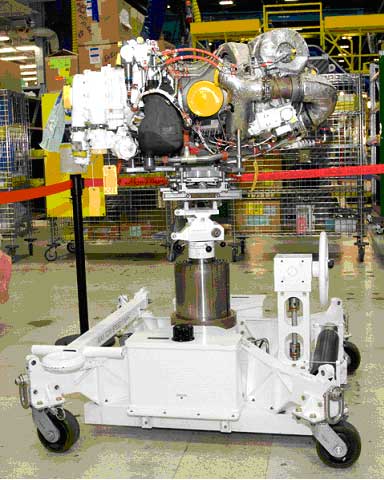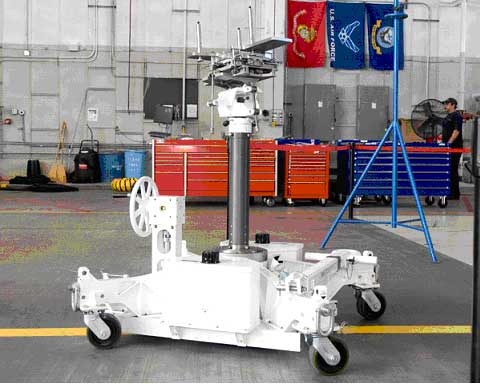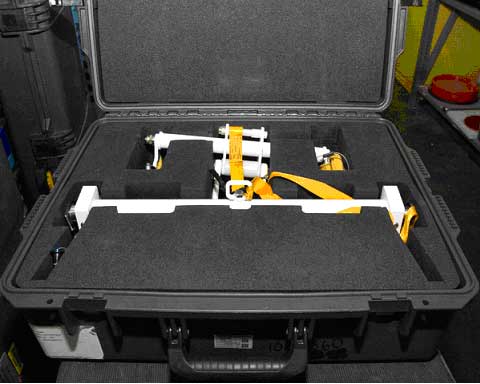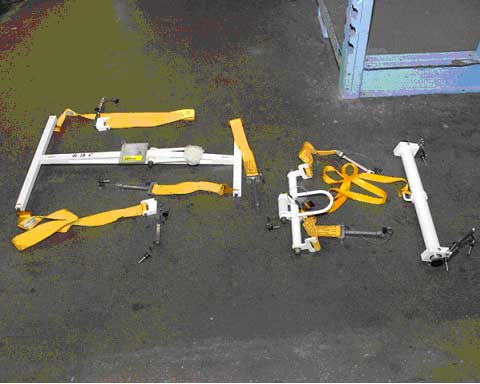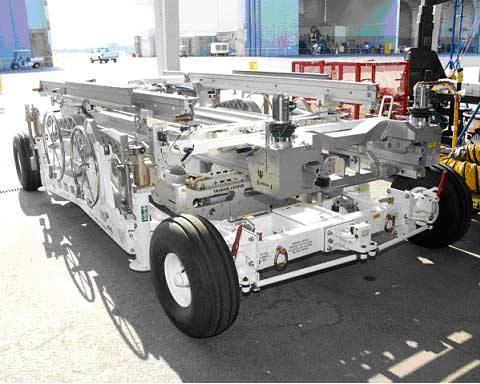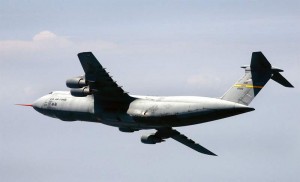9/17/09: The United States and its allies are in the midst of a significant financial downturn with serious consequences for defense acquisition. The “contingency operation” in Afghanistan and the “withdrawal” from Iraq both generate severe budgetary pressures and emphasize force acquisition priorities most appropriate to those operations. And the “withdrawal” from Iraq will cost billions of dollars in moving kit, training and equipping Iraqis, destroying kit and depoting kit used in Iraq. The Iraq “withdrawal business” will come at the expense of new kit in production or development.
Secretary Gates announced in early April his intention to turn this budgetary dilemma into a strategic reset in favor of counter-insurgency forces and equipment. Most notably, the Department plans to add civilian and military personnel with the attendant costs of such personnel and their clearly negative impact on funds available for procurement. He argued against the acquisition of “exquisite” equipment (such as the F-22 and some missile defense systems”) in favor of 80% solutions. In such an environment, it will be extremely difficult to launch new programs or to promote programs in development, which have not entered full production. Indeed, Washington is awash with “defense reformers” who want stable prices and cost effective solutions for defense problems, not matter how complex the challenge. Such a stance will inevitably lead to a bias against new or developmental programs. By definition, one can know the cost of a tank in production; one cannot fully price its replacement.
The Power Projection Transition
The United States faces a special dilemma in this regard because its power projection forces are unique in the West; and, indeed, U.S. allies have grown accustomed to U.S. naval and air superiority. This assumption may no longer be warranted as defenses become strengthened against offensive air operations, mobile systems being put in place by states such as Iran (which although not “peer competitors” will have access to peer weapons), and the U.S. Navy wishes to operate away from the Blue Water in more dangerous proximity to land in “enduring littoral operations” or simply littoral operations of long dwell and duration which expose the fleet to a growing multiplicity of threats.
Indeed one can argue that the Obama Administration will require power projection forces to be re-enforced not weakened during its tenure. Power projection forces are crucial to the Iraq withdrawal mission (in deterring Iran, and in protecting forces leaving, moving or staying in Iraq), to the Afghanistan mission (which requires distributed military forces which are connected by air assets), by a significant increased demand for tanking and lift for both missions, and, of course, all the other global missions which require U.S. power projection forces.
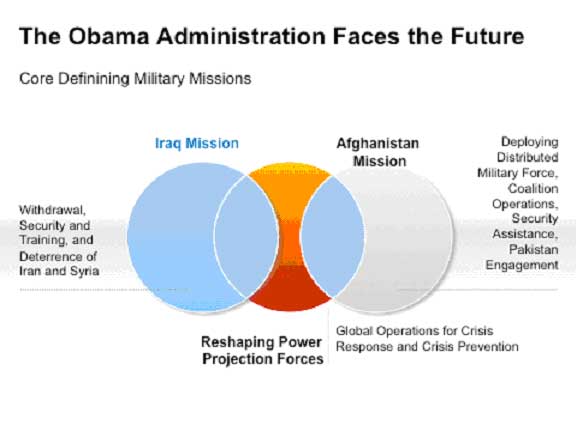
Indeed, one can argue that the most significant element of U.S. force structure which needs to be renewed and acquired over time are multi-mission power projection forces. These forces have been used continuously and flexibly throughout the post-cold war period and, in a variety of contingencies and situations, where shaping new capability on the fly has proven central to success.
But, if U.S. power projection is reverse the downward trend of the last two Administrations, the Obama Administration will need to seek a new approach to a joint and coalition multi-mission power projection force. Such a force would be built to deal with new challenges, not simply to prepare for major wars in the “Global War on Terror” or major confrontations with “peer competitors.”
The proximate drivers for a change in the power projection approach will be several:
- The termination of the F-22 program and the decision-context within which the program is terminated;
- The priority placed on the F-35 as a joint and coalition platform;
- The network enablement of the F-35 as the enabler for 21st century power projection forces:
- Growing capabilities to network the man-machine force structure inherent in the new manned aircraft and the blending of more effective relationships between data among the manned and robotic elements to create greater C4ISR D structures, with C4ISR D being understood as better integrated tools to provide for enhanced decision making;
- Moving ahead with a next generation re-fuelable tanker to support modern aerospace forces, manned and unmanned;
- Central priority on the Iraq drawdown and the Afghanistan concept of operation and strategy for U.S. and allied engagement;
- The impact of the financial crisis and public policy responses to that crisis on the acquisition of power projection forces;
- The emergence of crises that require power projection forces;
- The ability of the US Air Force and Navy to work together to shape tailored concepts of operations which allow greater network synergy, ISR coverage, support for ground and insertion forces, and for joint or single-service led strike operations;
- The priority placed on dealing with enhanced defenses among state actors opposing U.S. interests; the simple point is that defenses are getting harder to penetrate and re-working U.S. capabilities will require nothing less than a new 21st century concept of air operations.
These are simply some of the key drivers of change. To the extent to which the drawdown in Iraq is seen to require attention to integrated power projection forces both to protect U.S. forces leaving Iraq and to deal with regional rivals to U.S. influence in the newly independent Iraq, a priority could emerge upon a revamped power projection force. But the focus could well be upon some variant of the F-35 model, namely a joint and coalition platform which enables an engagement of either a national joint or coalition force.
And the new projection force should be viewed as multi-mission in character. The conventional wisdom about power projection is that is primarily characterized by a significant strike role. Absent “peer” competitors, the strike role is diminished and with it the need for a significant strike force. Secretary Gates has made this point many times and, if continued for the duration of the Obama Administration, U.S. capabilities will degrade further.
Enhanced US Air Force and US Naval Synergy
An effective approach to a strategic re-set for the United States does not start where Gates has focused the effort, namely, on the priority of stability operations or counter-insurgency forces. Rather, it starts by a more effective integration of U.S. power projection forces and continued commitment to multi-mission forces. This means seeking where possible synergies in the concepts of operations between the US Air Force and the US Navy, and to promote programs which allow such synergy to be enhanced.
In other words, there is a strategic requirement and opportunity to provide for much better integration between the U.S. Air Force and the U.S. Navy in promoting connectivity, synergy and capability to leverage its forces. Both face significant shortfalls; working more effectively they can enhance the nations capability to project power, provide presence and work with friends and allies.
This can be done in a number of immediate ways. The joint acquisition of Global Hawk and the joint deployments on Guam provide an opportunity to develop more effective joint ISR concepts of operations and data sharing. The joint acquisition of the F-35 provides a further opportunity to develop a 21st century concept of air operations which draws on the strengths of the 5th generation aircraft to provide for a new approach to maritime and air integration. The integration of Aegis systems with the F-35 provides another opportunity to link the Air Force and USN into more effective littoral presence and strike missions.
The USN will launch a new carrier and would be an excellent idea to link this new carrier with new con-ops for the USN as an anchor for global security. The point of an aviation carrier is that it carries air assets and by working closely with other US air elements and promoting capability to work with allies, a carrier becomes part of a global security solution, not just dedicated to blue water operations.
The new carrier will carry a new Hawkeye system, F-35 and can become the mother ship for a new UCAS system. As General Davis, the former PEO for F-35, noted in a recent interview for this article, “What becomes important is to understand how our new systems are working much more effectively with regard to interoperability and leveraging one another. We need for focus on the emergence of battle management networks encompassing carriers, F/A-18s, Hawkeyes, UAVs, F-35s and Marines on the beach.” With these systems able to work interoperability with other air and strike elements, broader recognition of the value of the continued carrier efforts might be generated.
The Naval UCAS as Significant Enhancer of Power Projection
The new UCAS system is an example of the type of new program, which ought to be supported in the period of defense transition in front of the United States. It is currently in a vulnerable funding state. The demonstration program has been funded but in the current environment can a new program such as UCAS survive?
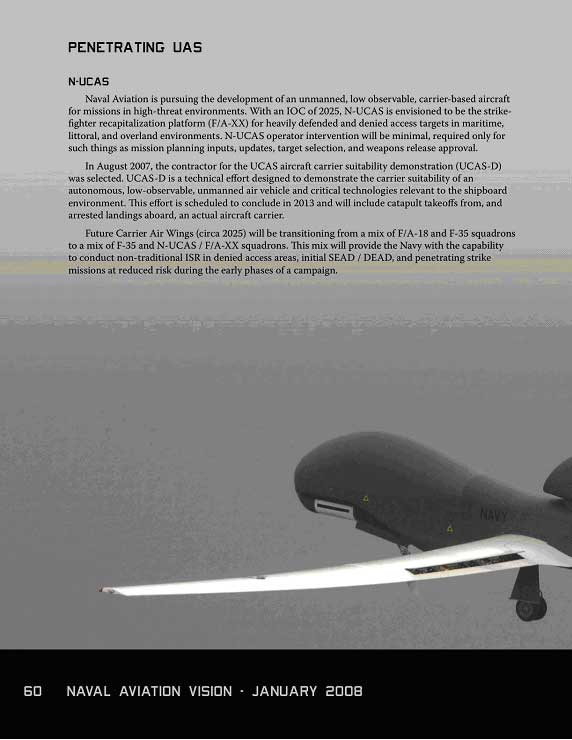
The program brings a number of key enhancements to the table, and these contributions suggest a template for the types of new programs, which should be supported even in a constrained fiscal environment.
First, it extends the strike range of an already funded core capability, namely, the carrier task force. Tactical aircraft have limited range; the UCAS has much greater range and reach. This makes it valuable in and of itself, but extending the reach of the new tactical aviation asset to be deployed to the fleet, namely the F-35, enhances its value. The sensor and communication capabilities of the F-35 are significant, but the reach of the aircraft remains within tactical ranges; the UCAS has forward strategic strike reach as well as ISR and communications reach-back to the tactical assets. The UCAS can spearhead the entire sensor and strike grid put up by the carrier task force.
Second, the UCAS will be the first unmanned system developed in the wake of the deployment of the new F-35. The F-35 as a “flying combat system” should be a generator of change in the unmanned fleet. The development and then deployment of the UCAS will be integrally interconnected with the F-35, and as such can take advantage of commonality in sensors and communications with the new manned aircraft. Shaping a common concept of operations between the F-35 and the UCAS can provide an important stimulus for change for the US Air Force as well.
Third, it is highly likely that the US Air Force new bomber program will be shifted to the right in funding priorities. This provides a significant opportunity for the US Air Force to learn from the US Navy’s experience in deploying the UCAS with the F-35 to shape a possible unmanned successor for the manned bomber. A template could be shaped by the Navy, which could provide important lessons learned in shaping the US Air Force’s strategy to work the future of its unmanned programs with manned aircraft.
Fourth, the company building the UCAS demonstrator, Northrop Grumman, can draw on significant lessons learned in their other unmanned programs, such as Global Hawk, and on their core contributions in sensors and communications to the F-35 to provide a realistic development to production program for the new UCAS aircraft.
In other words, the program evidences a number of key qualities, which makes it worthy of finding even in a stringent environment. It leverages significant capabilities already paid for and deployed. It leverages new capabilities coming into the fleet. It provides a way to enhance synergy between both power projection forces. It provides a learning curve, which the US Air Force can use in shaping its future development and acquisition approach.
A Significant Enhancer of Multi-Mission Capability
Another discriminator for the UCAS is that it provides a core multi-mission capability for the joint and coalition force structure. It should not be understood as a stand-alone platform, which is of value only in the most extreme warfighting conditions. It is NOT a specialized asset, rather it is a multi-mission asset useful across the spectrum of conflict and in the diverse concepts of operations which the U.S. Navy, and the joint and coalition forces are likely engage in against the most likely threats of the next two decades.
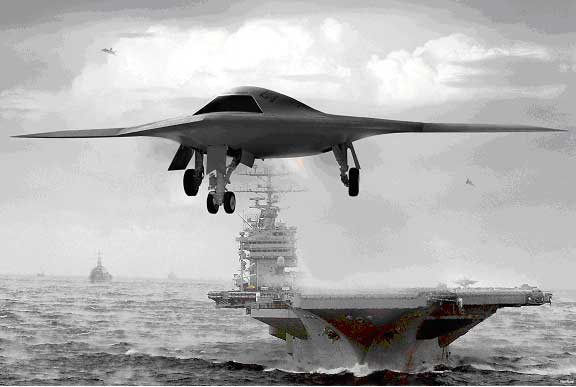
The UCAS will be a significant asset in the formation of the new concepts of operations for distribution aerospace forces. Among the forward deployed stealth assets, a significant sharing of ISR, C2 and strike functions will be shared, and communicated to other assets in supporting roles. The UCAS with its distinctive stealth capabilities will become an important node in the new air operations network which can be used in command and control functions, as a forward air controller identifying targets for either stealth or legacy aircraft, as strike platforms leading an attack or supporting an attack by providing more weapons on targets needed by the manned stealth aircraft.
The UCAS will an important contributor to fighting the hybrid wars facing America and its allies. With the diffusion of advanced technologies, both commercial and military, U.S. and allied militaries cannot count on a clearly defined spectrum of conflict from low to high intensity of operations; Low intensity can become mid-intensity rapidly. You do not want to bring a knife to a gunfight, especially when you are not certain of who is defining the nature of the conflict or its tactical or strategic reach. This is especially true in the era of cyberwarfare as well, whereby the length and breadth of the battlespace is unknown until engagement. A modular UCAS brings a diversity of capabilities to the battlespace, ranging from command and control support, situational awareness, providing crucial links in a distributed electronic or cyber war attack, initial strike weapons, additional support strike weapons. In addition, these capabilities are launched from an alternative airfield at sea with a different set of trajectories than land-based facilities, which further enhance the capability of the joint or coalition force.
The UCAS also can provide an important tool in support of insertion forces. The USMC focuses on the need for a new approach to sea basing. As the U.S. Army, the U.S. Air Force and the USMC augment their Special Forces capabilities, and in the case of the U.S. Air Force and USMC the Osprey is seen as a key tool for rapid force insertion, the UCAS can provide a crucial support element for rapidly inserted ground-air forces. The introduction of a stealthy UAV provides the top cover for the insertion of Special Forces for raiding or counter-terrorism operations. Insertion forces by definition can be rapidly withdrawn as well. The U.S. after long wars in Iraq and Afghanistan might well consider the advantage of rapidly inserted forces to deal with the suppression of local threats creating global consequences.
The USMC for certain, and several allies as well will deploy the F-35B. And perhaps the U.S. Air Force as it reconsiders its position within the re-set of power projection forces might acquire this aircraft as well. The STOVL aircraft has many advantages for concepts of operations, including deploying ashore on rugged “airfields” and operating from support structures at sea or on the air. Dependent upon the amount of time ashore and where operating the USMC has developed an effective plan for support of the dispersed force ashore. The advantage of “airfields” not known ahead of actual deployment is significant; a UCAS as providing for early and continuing ISR or defensive support for forward deployed STOVL airfields is compelling.
And finally, the UCAS can provide a significant contribution to an “enduring littoral presence” mission for the U.S. Navy. The U.S. Navy has struggled to define its littoral mission. When the service operated “from the sea” construct, the littoral were simply space through which strike and sea control was exercised. In the world of today and the next decades, engagement in the littorals for relatively long duration is a crucial mission. As the U.S. Navy considers acquisition of the littoral combat ship (LCS), the question of how to sustain the operation of these ships or how to combine them with other littoral assets such as an engaged USMC will become significant. The UCAS will provide a significant airborne asset to support the LCS in its initial engagement and provide sustained support as desired.
Conclusion
The UCAS should be seen as a multi-mission asset, not a specialized asset. The threats facing the U.S. and its allies are hybrid in character. As such, multi-mission capabilities need to be deployed for ANY tailored mission. Indeed, the experience since the end of the Cold War has demonstrated how little predictability either strategists or policymakers have provided in their forecasts for the future. What has happened is that the U.S. military has used virtually every weapon or capability in its kit to craft unique responses to every situation which policymakers have demanded of the U.S. military. As a result, it would prudent for U.S. policymakers to ensure that a multi-mission power projection force be supported and developed in the years ahead. Indeed, OSD has initiated an effort to enhance air and seapower capabilities. As they sort through new approaches to sea and air power collaboration enhancing the unmanned and manned synergies should be a significant element of the effort.
An earlier version was published in RUSI Defence Systems (Summer 2009).
———-
***Posted September 17th, 2009


